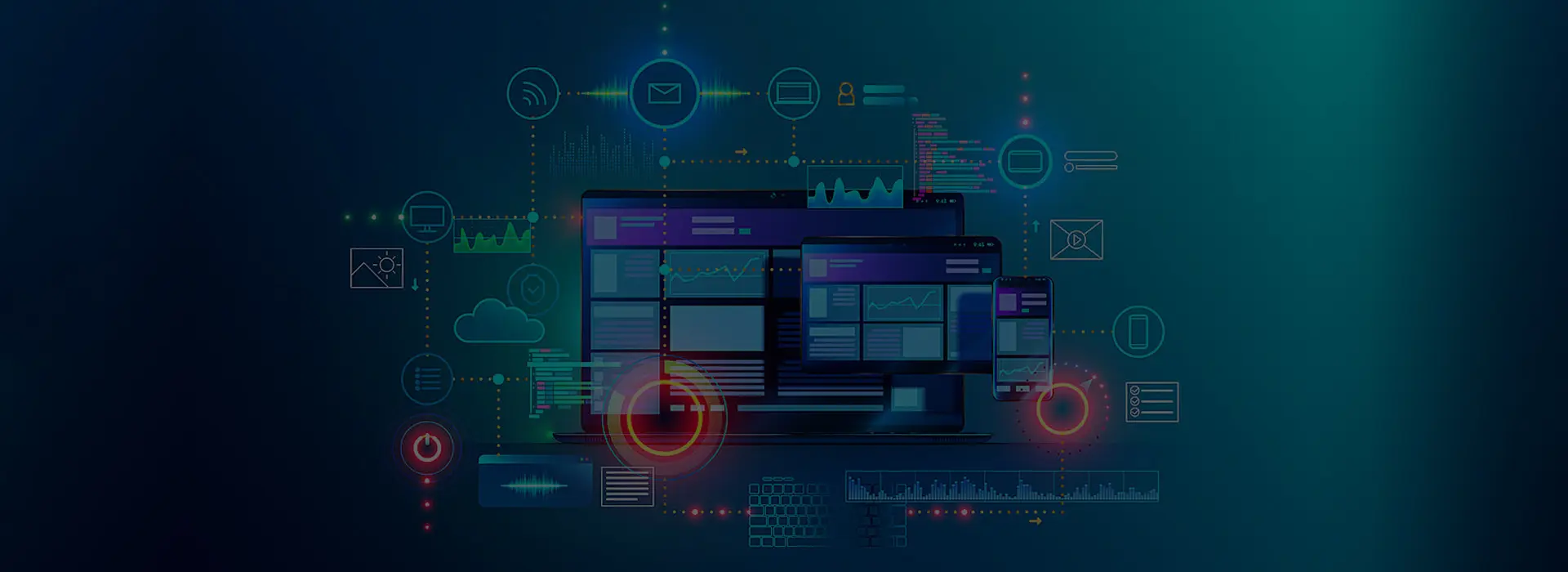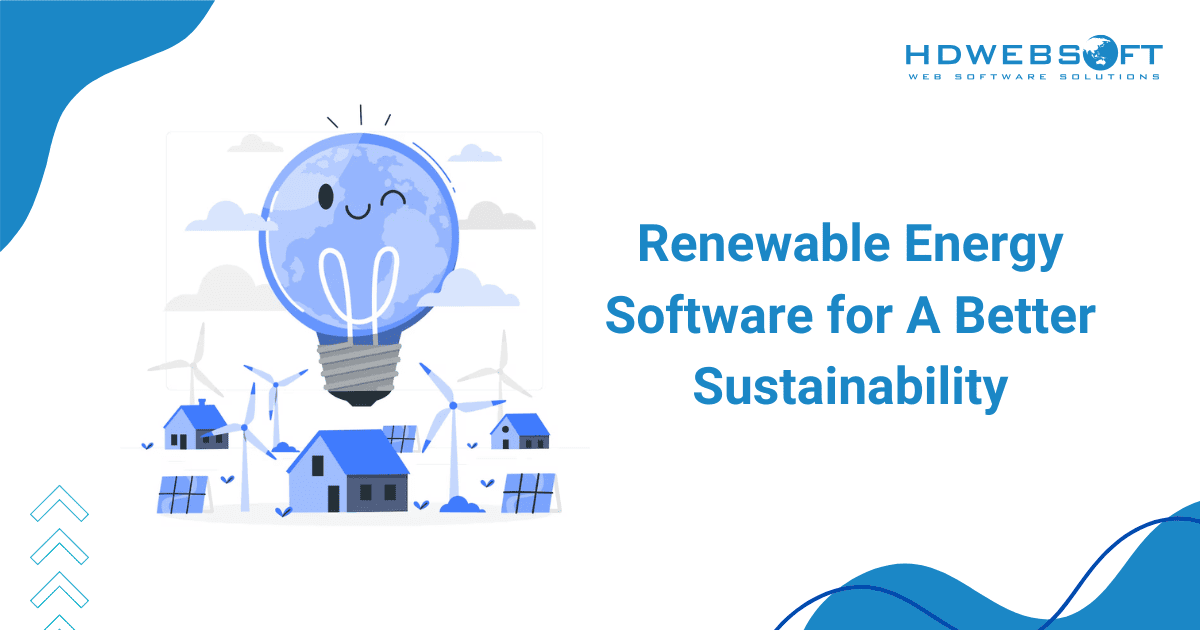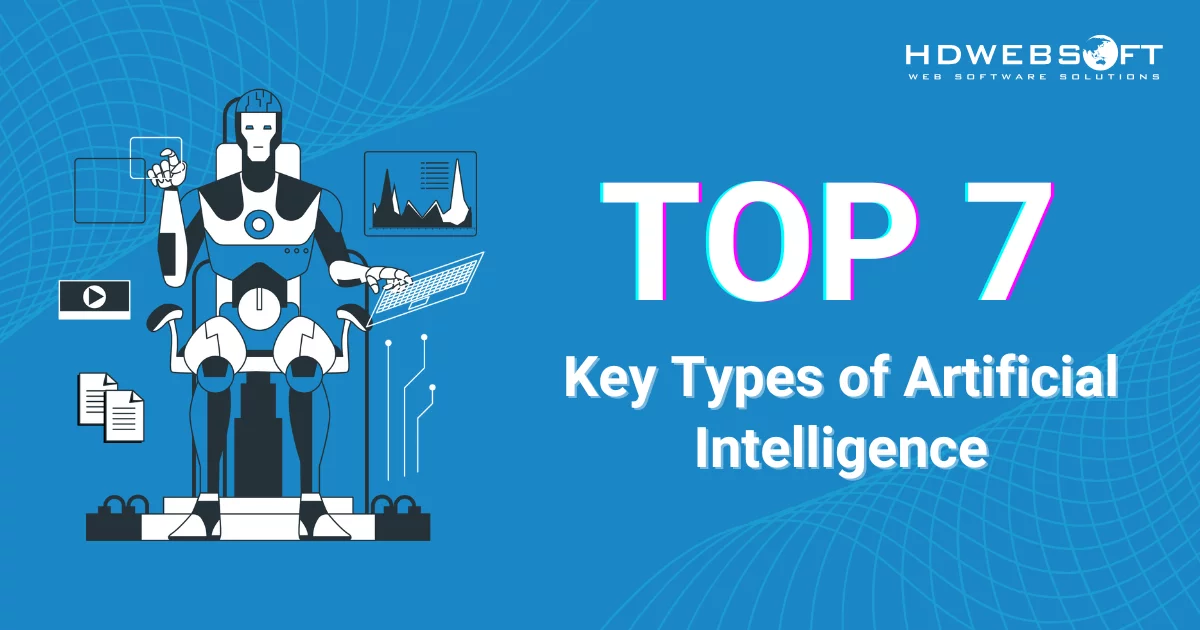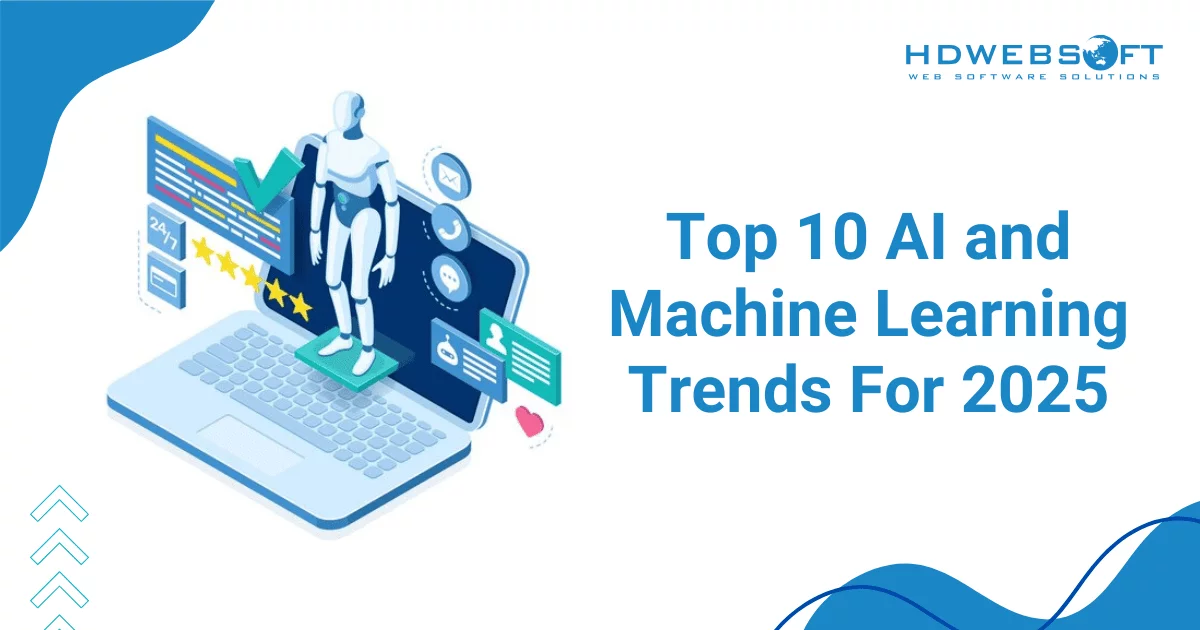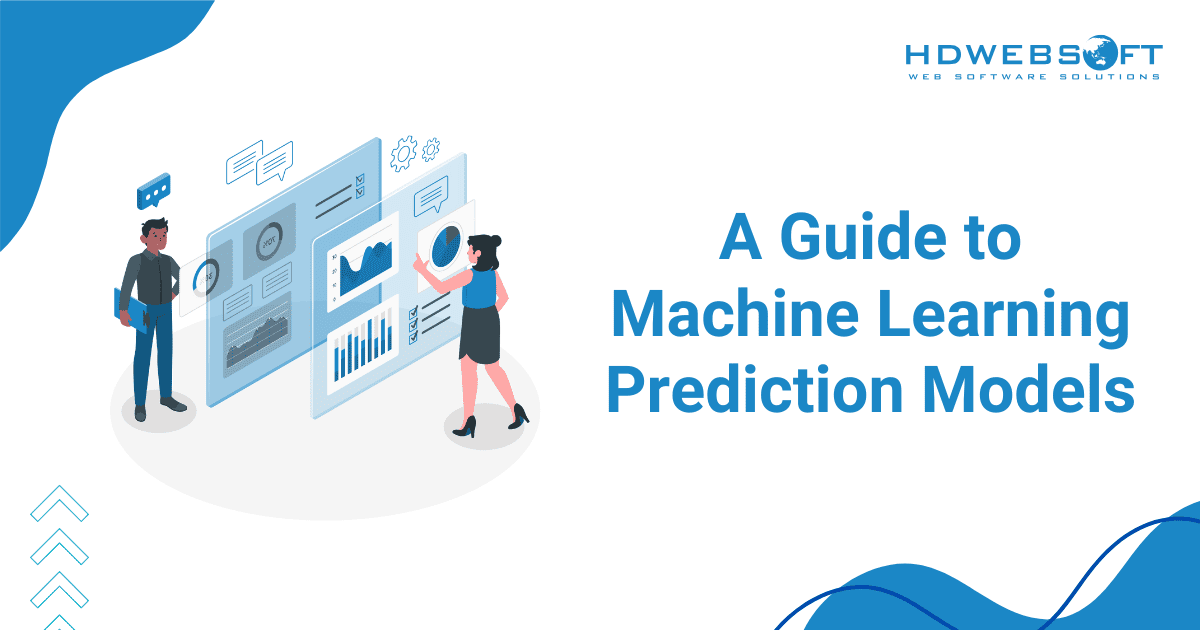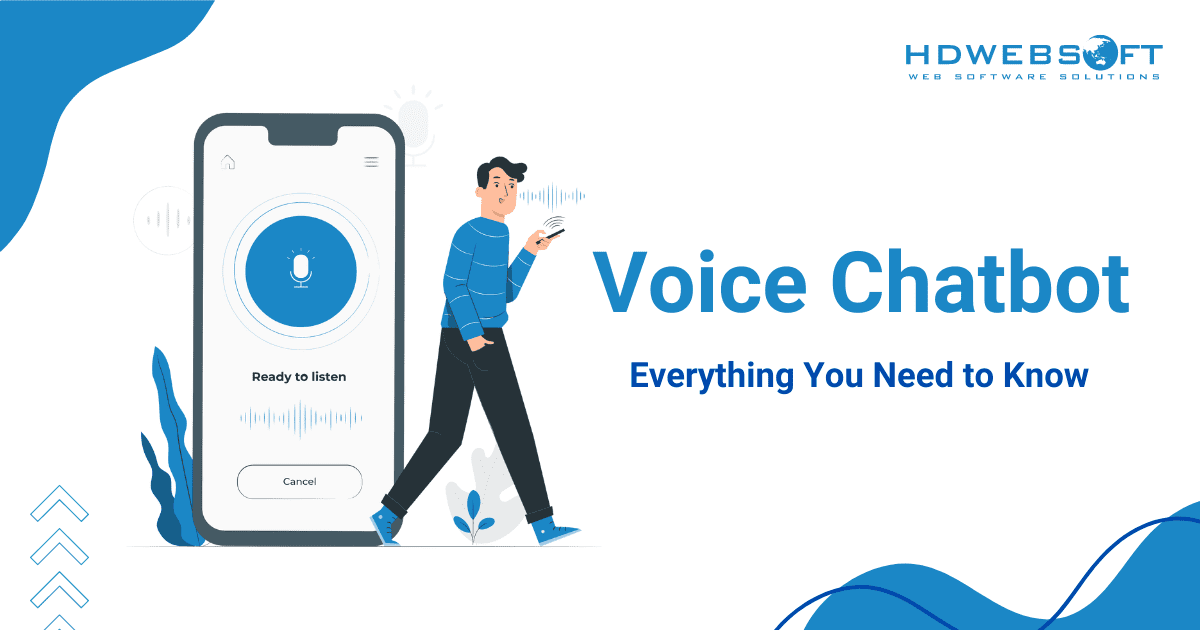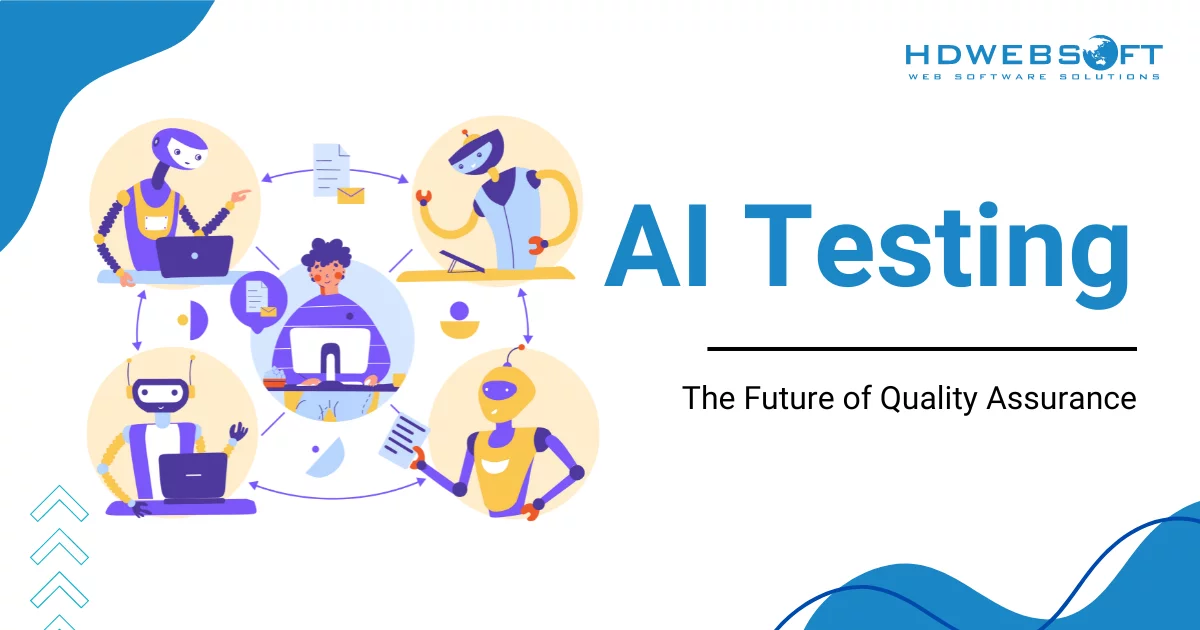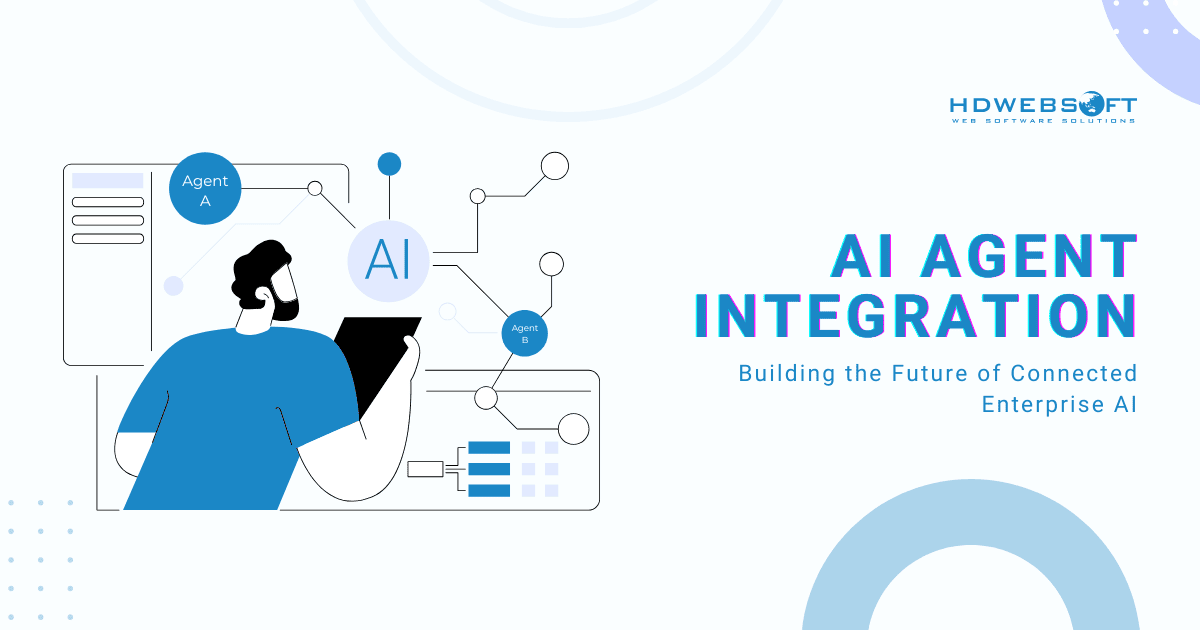
AI Agent Integration and Interoperability: Building the Future of Connected Enterprise AI
AI agent integration represents the next frontier in enterprise technology. It’s fundamentally transforming how organizations deploy and orchestrate artificial intelligence capabilities across their operations. Rather than relying on isolated AI solutions, forward-thinking companies are embracing multi-agent systems that work collaboratively to solve complex challenges.
This guide explores the essentials of integrating an AI agent into enterprise environments, covering technical architecture, API design, and strategies. It highlights proven methods for connecting specialized agents, practical workflow automation examples using platforms like n8n, and emerging standards that shape agent interoperability.
Whether you’re a technical architect planning deployment or a business leader evaluating opportunities, this resource offers actionable insights for building scalable, future-ready AI ecosystems.
- 1) Understanding AI Agent Integration in Enterprise Context
- 2) Technical Architecture for Multi-Agent Integration
- 3) n8n AI Agent Integration: A Practical Case Study
- 4) Standards and Protocols for AI Agent Integration Interoperability
- 5) Implementation Best Practices and Governance for AI Agent Integration
- 6) Future Outlook and Emerging Trends in AI Agent Integration
- 7) Conclusion
Understanding AI Agent Integration in Enterprise Context
Before we dive into the main content, let’s take a look at the journey of the integration of AI agents throughout the years and beyond.
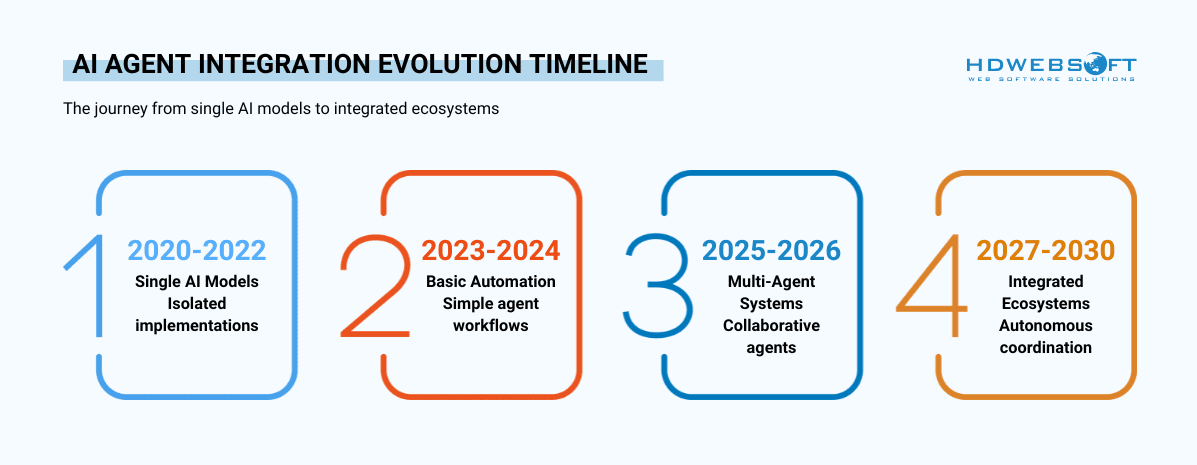
Defining Modern AI Agent Integration Approaches
Contemporary AI agent integration goes far beyond traditional automation, encompassing sophisticated systems where multiple specialized agents collaborate dynamically. Unlike conventional AI implementations that operate in isolation, integrated agents share context, exchange information, and coordinate actions to achieve complex business objectives.
Typically, these systems include conversational agents for customer interaction and analytical agents for data processing. In addition, they feature decision-making agents for automated workflows, while monitoring agents handle system oversight and management.
Core Challenges When Integrating AI Agents into Enterprise Systems
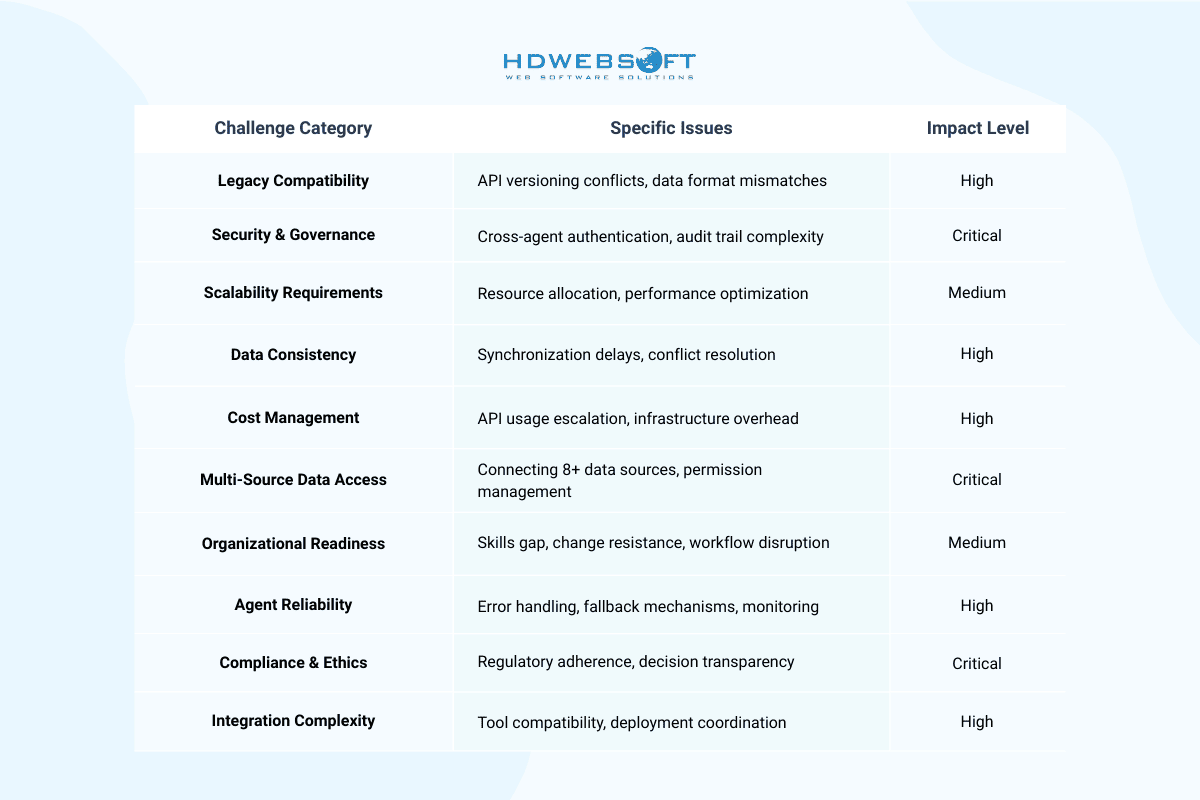
Legacy system compatibility presents the most significant hurdle when integrating AI agents into enterprise infrastructure. Moreover, organizations must address data format inconsistencies across different AI platforms while maintaining security protocols that govern inter-agent communication.
Additionally, scalability requirements become increasingly complex as the number of integrated agents grows, demanding robust resource management strategies.
Enterprise Integration Success Factors
Successfully integrating AI agents requires careful consideration of existing technological constraints alongside future expansion needs. Organizations must establish clear governance frameworks that define the boundaries of agent behavior while ensuring compliance with industry regulations.
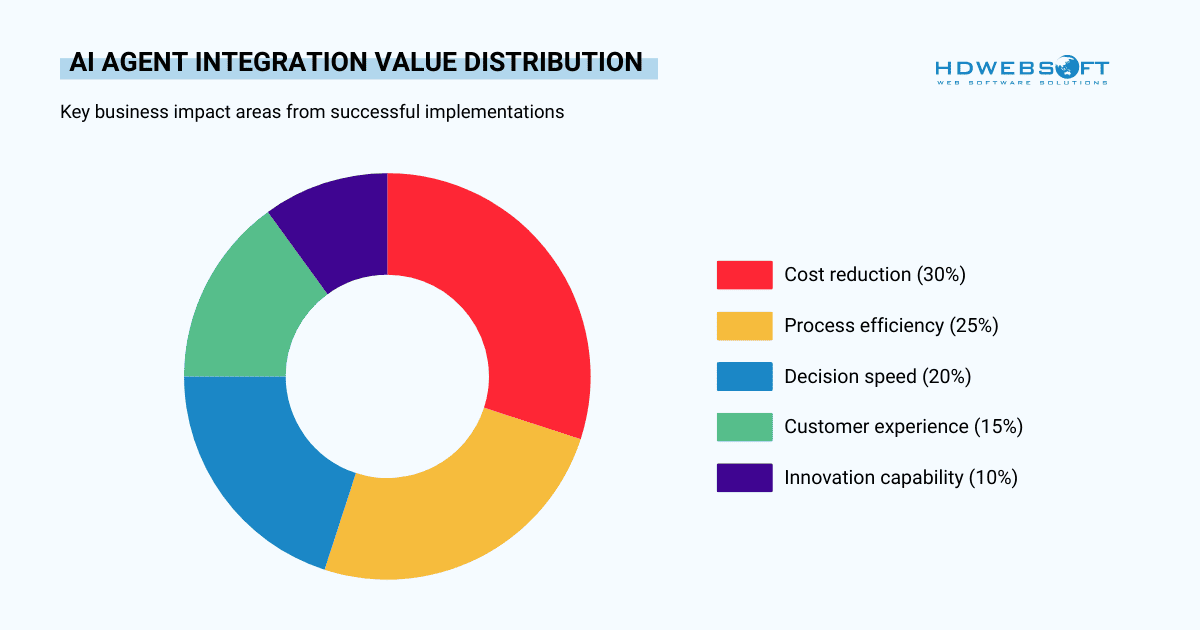
Consequently, the most successful AI agent integration adopts phased rollout approaches that gradually introduce new agents. All the while, maintaining system stability and user confidence.
Technical Architecture for Multi-Agent Integration
Core AI Agent Integration Patterns
Modern multi-agent integration architectures typically follow either a hub-and-spoke or mesh network pattern. Each of them offers distinct advantages depending on the organization’s requirements.
Hub-and-spoke architectures centralize communication through a single integration layer, simplifying management while potentially creating bottlenecks. Conversely, mesh networks enable direct agent-to-agent communication, providing greater flexibility but requiring more sophisticated coordination mechanisms. Moreover, event-driven communication patterns have emerged as the preferred approach for integrating AI agents. As a result, they are able to respond dynamically to system changes without requiring constant polling.
Furthermore, microservices architecture enables the independent deployment and scaling of agents. Meanwhile, container orchestration platforms like Kubernetes provide robust management capabilities for complex multi-agent environments.
Here’s a visual graph of how hub-and-spoke architecture should look like:
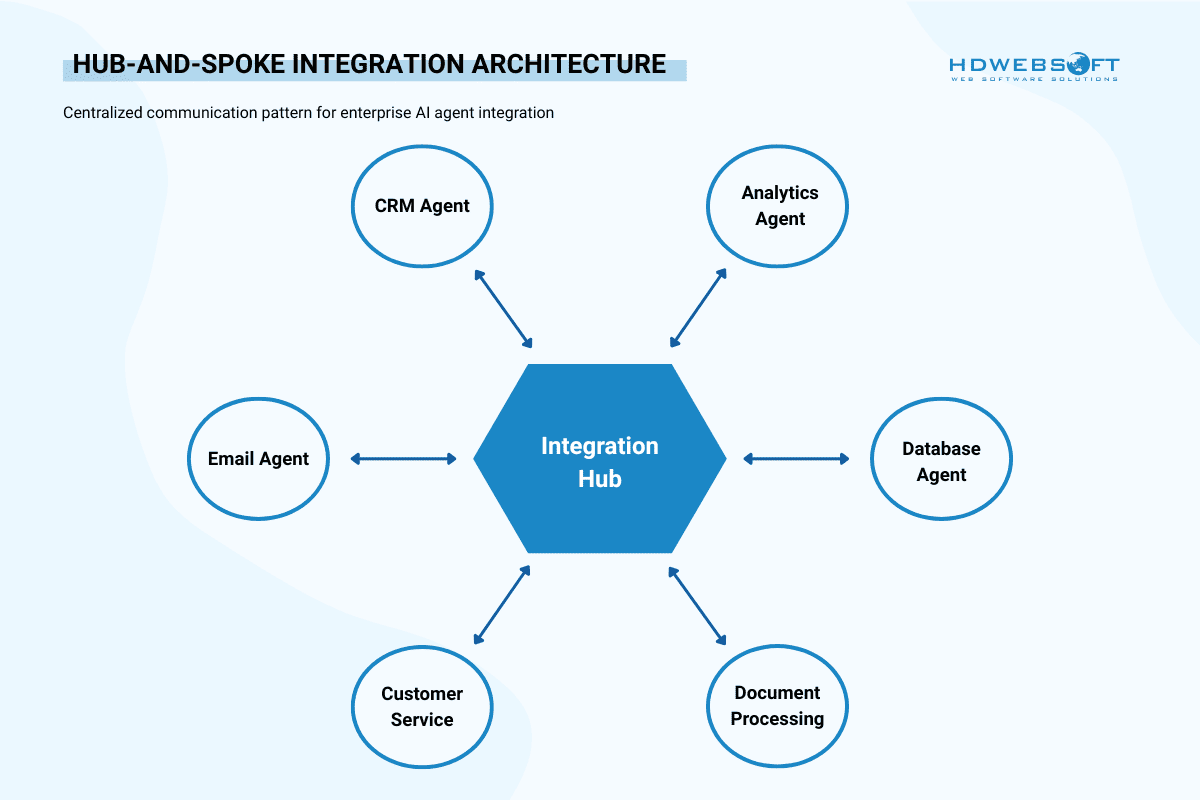
API Design Principles
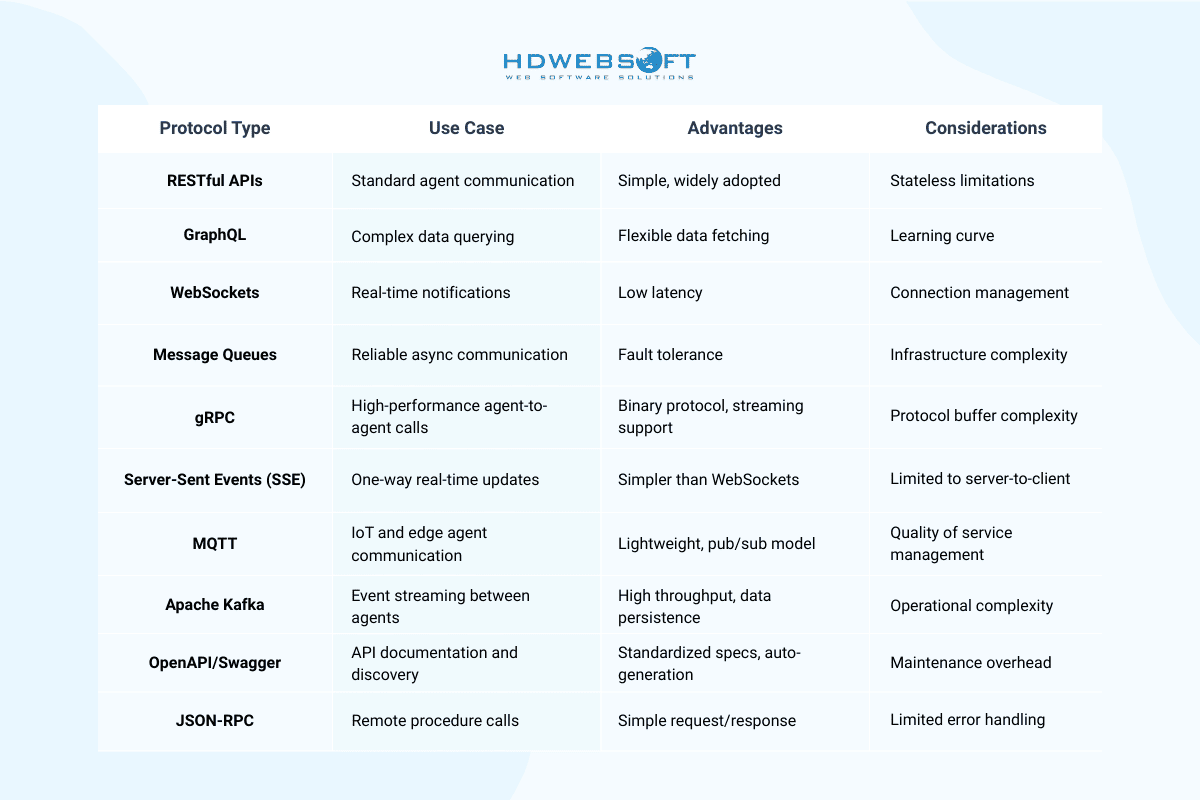
Beyond protocol selection, implementing effective AI agent integration requires careful attention to some important aspects. They are API versioning strategies, error handling mechanisms, and performance optimization techniques.
Hence, organizations must establish consistent patterns for agent authentication, request/response formatting, and timeout management. By then, a reliable inter-agent communication across diverse enterprise environments will be certain.
Data Layer Considerations
Establishing shared data models and schemas represents a critical success factor for integrating AI agents into enterprise systems. Thus, companies should implement real-time data synchronization strategies that maintain consistency across multiple agents while minimizing the impact of latency.
What’s more, conflict resolution mechanisms become particularly important when multiple agents attempt to modify shared data simultaneously. They require sophisticated versioning and locking strategies.
Lastly, privacy and security considerations take on added complexity in multi-agent environments, necessitating fine-grained access controls and comprehensive audit logging. One key tip is that successful AI agent integration implementation must establish clear data ownership boundaries. Concurrently, necessary information sharing for collaborative agent operations must be maintained as well.
n8n AI Agent Integration: A Practical Case Study
Integrating AI Agents to Enterprise Systems with n8n Platform
n8n’s workflow automation platform has emerged as a powerful solution for integrating AI agents into enterprise environments. It offers visual workflow design capabilities that simplify complex agent orchestration tasks.
The platform’s node-based architecture enables seamless connection of multiple AI services, from OpenAI’s GPT models to specialized industry-specific agents. Furthermore, n8n’s extensive integration library supports connections to popular enterprise systems, including CRM platforms, databases, and communication tools.
The visual workflow designer excels particularly in multi-agent integration scenarios. In these cases, business users can understand and modify agent interactions without extensive programming knowledge. This accessibility factor has made n8n increasingly popular for organizations seeking to democratize AI automation while maintaining technical sophistication.
Implementing Multi-Agent Workflows
Creating effective multi-step agent workflows requires careful consideration of error handling and fallback strategies during n8n AI agent integration implementation.
In fact, n8n provides robust conditional logic nodes that enable sophisticated branching based on agent responses. At the same time, its built-in retry mechanisms ensure resilient operation even when individual agents experience temporary failures. Hence, performance optimization becomes crucial in agent-heavy workflows, requiring strategic use of parallel processing and efficient resource allocation.
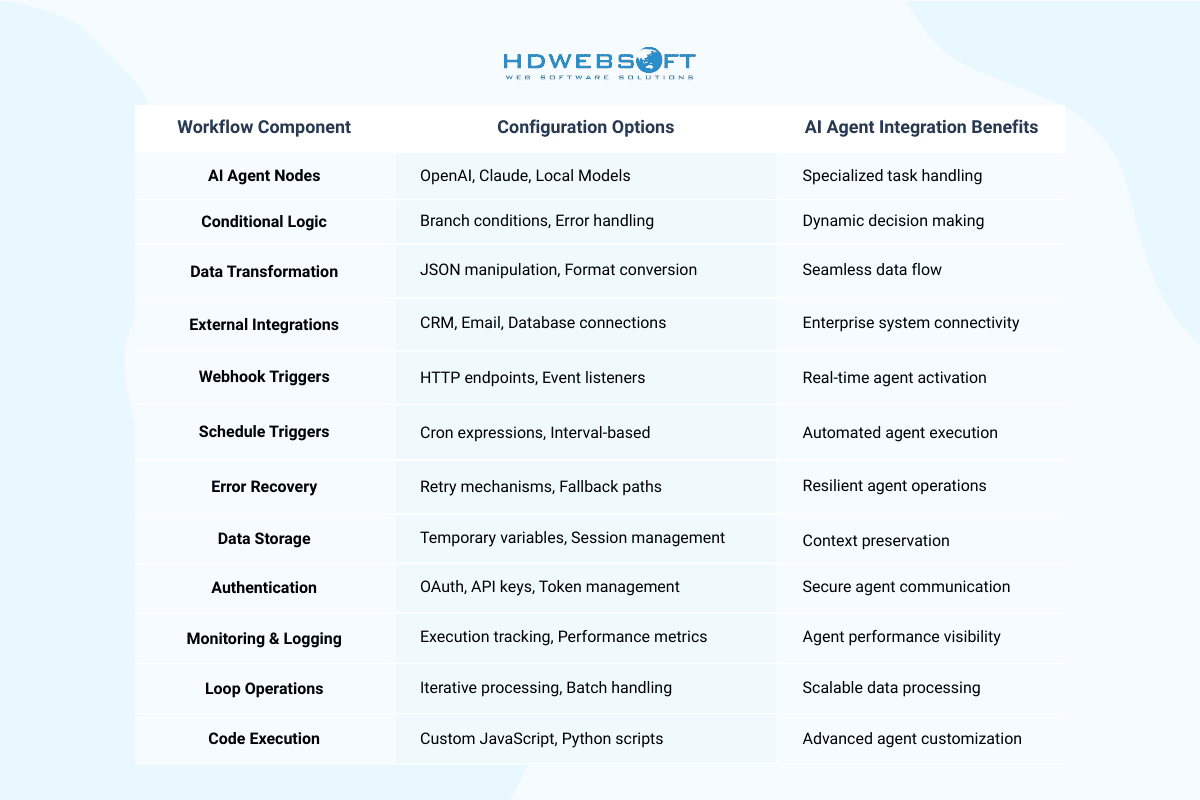
Real-World n8n AI Agent Integration Scenarios
Customer service automation represents one of the most successful applications of multi-agent integration within n8n workflows. Organizations typically implement chains of specialized agents. For example, initial classification agents route inquiries to the right departments, sentiment analysis agents assess customer emotions, and resolution agents deliver personalized responses based on historical data and current context.
Document processing pipelines showcase another compelling use case for integrating AI agents into enterprise workflows through n8n. These implementations combine OCR agents for text extraction, NLP agents for content analysis, and decision agents that route documents to appropriate business processes.
In all, the visual workflow interface for n8n AI agent integration enables business users to easily modify processing rules. Concurrently, the integration with existing enterprise document management systems will be maintained.
Best Practices for n8n AI Agent Integration
Successful multi-agent integration projects in n8n follow established workflow design patterns that optimize both performance and maintainability.
Testing and Validation Strategies
- Implement comprehensive testing frameworks that validate agent interactions across multiple scenarios.
- Test error conditions and failure recovery mechanisms to ensure system resilience.
- Conduct high-volume processing simulations to identify performance bottlenecks.
- Establish automated testing pipelines for continuous validation for integrating AI agent into enterprise systems.
Version Control and Development Management
- Adopt Git-based version control systems for tracking workflow modifications.
- Implement branching strategies that support collaborative agent development.
- Establish code review processes for the complex mult-agent integration into enterprise workflows.
- Maintain documentation standards for agent workflow changes and dependencies.
Cost Optimization and Performance Management
- Deploy intelligent caching strategies to minimize redundant API calls during AI agent integration.
- Implement request batching mechanisms to reduce per-transaction processing costs.
- Monitor usage patterns to optimize agent execution schedules and resource allocation.
- Establish cost monitoring dashboards for tracking and integrating AI agents into enterprise systems expenses.
Standards and Protocols for AI Agent Integration Interoperability
Emerging Industry Standards
The landscape of multi-agent integration standards continues to evolve rapidly, with several key initiatives shaping future interoperability requirements.
As a matter of fact, OpenAI’s API standardization efforts have established de facto standards for language model integration. Meanwhile, industry consortiums are developing broader frameworks for integrating AI agents into enterprise systems. The Partnership on AI consortium has published guidelines for ethical agent interaction. And the W3C is developing technical standards for agent communication protocols.
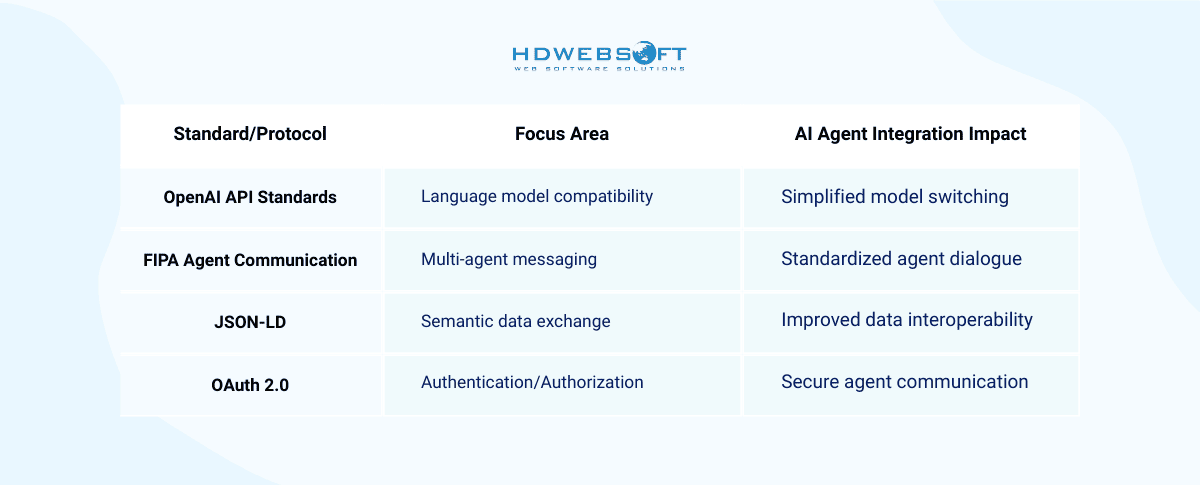
Protocol Deep Dive
Modern integration relies on a diverse ecosystem of technical standards and protocols. Each of the AI agent integration protocols addresses specific aspects of agent communication, data exchange, and system interoperability. Therefore, understanding these foundational technologies enables organizations to make informed decisions about which protocols best serve their objectives.
Key Standards and Their Applications
- Agent Communication Language (ACL) and FIPA Standards: Define comprehensive messaging protocols, message structure semantics, and interaction patterns. The ultimate goal is to enable seamless communication between agents from different vendors.
- WebSocket Communication Protocols: Enable real-time, low-latency, bidirectional communication essential for responsive multi-agent systems that require immediate data synchronization.
- OpenAPI/Swagger Specifications: Standardize API documentation and service discovery processes, facilitating automated agent integration and reducing manual configuration overhead.
- MQTT (Message Queuing Telemetry Transport): Support lightweight, publish-subscribe messaging patterns ideal for distributed agent networks and IoT-enabled multi-agent integration scenarios
Future-Proofing AI Agent Integration Strategies
Building vendor-neutral integration approaches becomes increasingly important as the AI agent integration landscape continues to mature. Organizations should implement abstraction layers that enable easy agent swapping without requiring extensive system modifications.
What’s more, feature flags provide another valuable strategy. They’ll enable gradual rollouts of new agent capabilities while maintaining system stability during integration of AI agents to enterprise initiatives.
Implementation Best Practices and Governance for AI Agent Integration
Strategic Framework for Integrating AI Agents into Enterprise
Developing comprehensive assessment criteria enables organizations to select complementary agents that maximize multi-agent integration value while minimizing implementation complexity.
Phased rollout approaches prove most effective, beginning with low-risk, high-value use cases before expanding to mission-critical applications. ROI measurement frameworks should encompass both quantitative metrics (cost savings, processing time reductions) and qualitative benefits (improved user experience, enhanced decision-making capabilities).
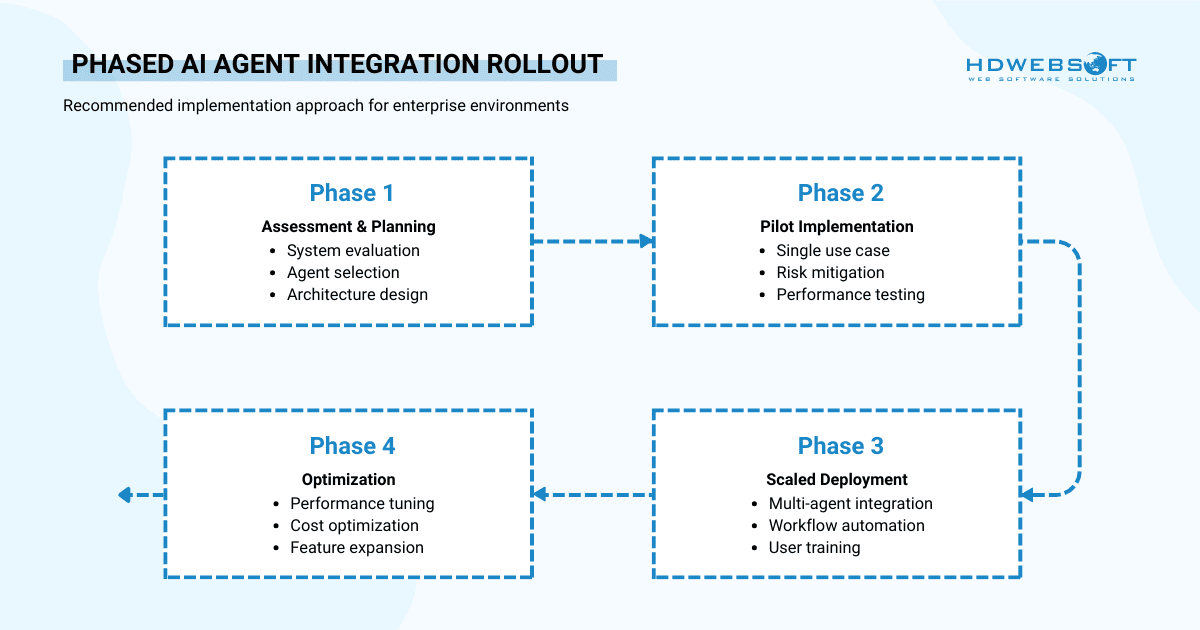
Governance and Compliance in Multi-Agent Integration
Establishing clear agent behavior guidelines becomes particularly complex when integrating AI agents into enterprise systems. So, enterprises must ensure consistent ethical standards across all integrated agents.
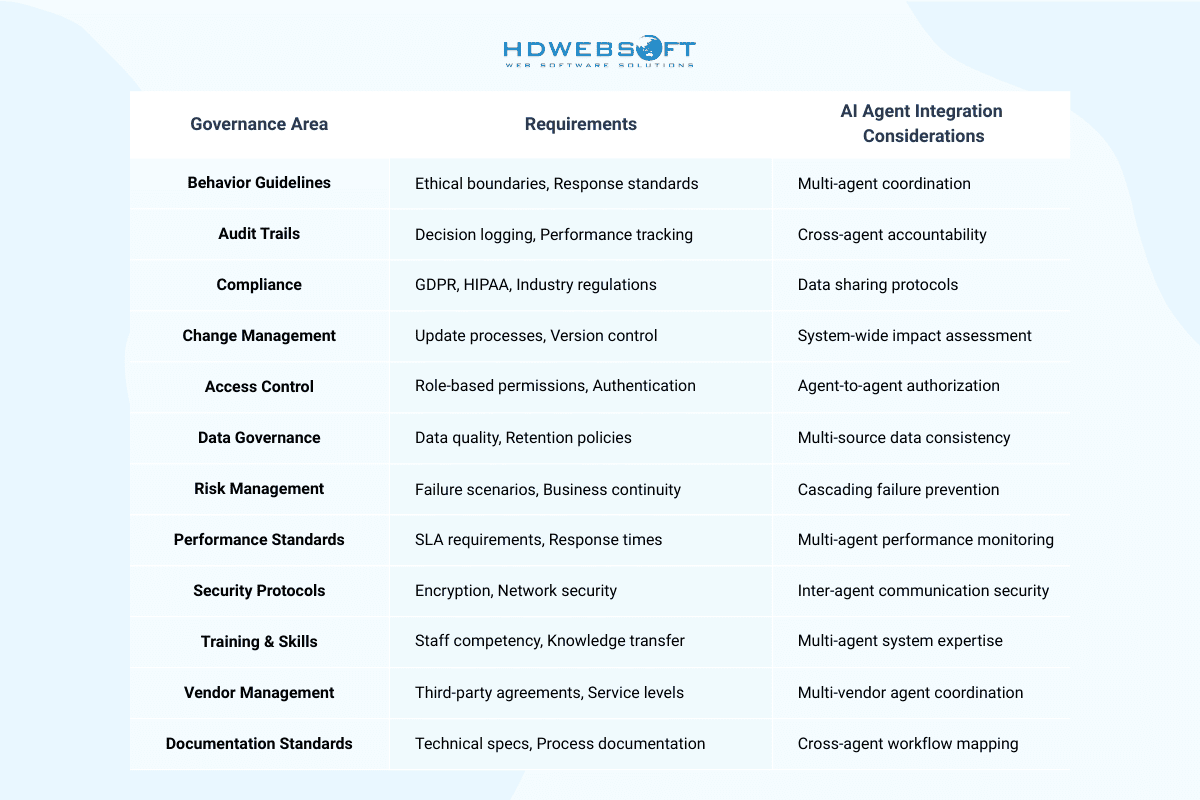
Don’t forget that comprehensive audit trails enable accountability in multi-agent decision-making scenarios. Additionally, compliance frameworks must address the unique challenges of data sharing between different AI systems.
Over and above that, change management processes require special attention during AI agent integration projects. Given that, updates to individual agents can have cascading effects across the entire system. Thus, implementing thorough testing protocols and rollback procedures is essential to maintain system stability and continually improve agent capabilities.
Future Outlook and Emerging Trends in AI Agent Integration
Looking ahead, the trajectory of multi-agent integration points toward increasingly sophisticated autonomous systems that can adapt and collaborate with minimal human intervention. Needless to say, it’s important for businesses to keep up with the emerging trends that facilitate informed decisions. Whether it’s about technology investments or architectural choices, they remain viable as the field continues to evolve rapidly.
Market Growth and Adoption Trends
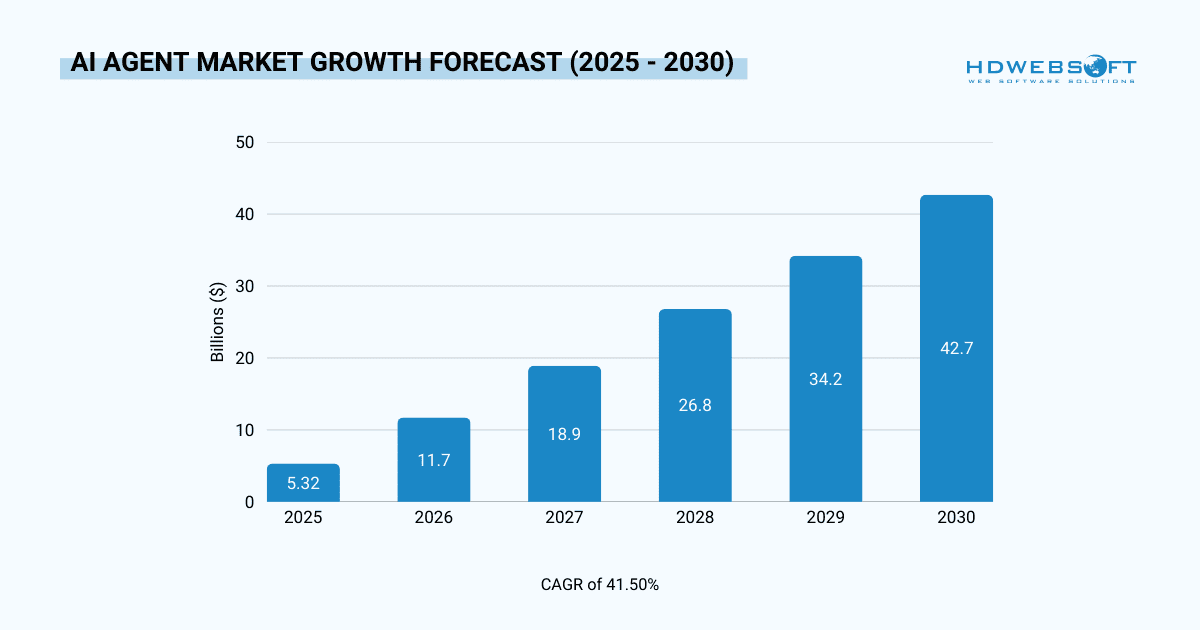
The global AI agent market is experiencing unprecedented growth. It’s estimated to expand from $5.32 billion in 2025 to $42.7 billion by 2030. More significantly, approximately 85% of enterprises are expected to have AI agent integration by the end of 2025. At the same time, 82% of companies plan to integrate AI agents within 1-3 years.
Technical Evolution and Capabilities
Deloitte predicts that by 2025, 25% of companies using generative AI will launch agentic AI pilots or proofs of concept. Moreover, the number is projected to increase to 50% by 2027. This represents a significant shift toward autonomous systems that can adapt and collaborate when integrating AI agents into enterprise environments.
In all, organizations preparing for next-generation multi-agent integration capabilities should focus on building flexible architectures that can accommodate emerging technologies. During that process, it’s vital to maintain compatibility with existing systems.
Conclusion
Successful AI agent integration requires careful planning, robust technical architecture, and adherence to emerging standards for interoperability. As integrating AI agents to enterprise systems becomes increasingly sophisticated, organizations that invest in proper integration strategies today will be best positioned to leverage the transformative potential of connected, collaborative AI ecosystems.
For organizations seeking expert guidance in implementing comprehensive AI agent integration solutions, HDWEBSOFT offers specialized AI development services. Our experienced team helps enterprises navigate the complexities of multi-agent systems. Your AI solution will be scalable, secure, and compliant integration architectures that align with long-term business objectives.


